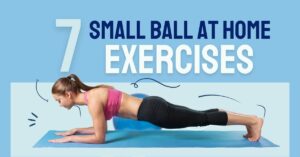Table of Contents
ToggleIntroduction to Outdoor Fitness Workouts:
Fitness takes on a whole new meaning after you visit outside the gym. Outdoor fitness workouts are incredibly effective for transforming your body, improving mental health, and transporting yourself outside to connect with nature while inching yourself closer to being fit. Anyone from the hardcore athlete to the greenhorn can benefit from a change in their workouts by heading out of an indoor gym and outside, where beauty and expression need very little explanation.
Why choose outdoor fitness? The benefits are limitless. Outdoor Workouts are Unique Exercise Experiences From Improving your cardiovascular health to soaking up some sun; outdoor workouts give you a unique blend of physical, mental and emotional benefits. Research indicates that time in nature can lower stress, boost energy, and enhance concentration and creativity.
In this article, we will count ten outdoor fitness workouts that you can do to build strength, endurance, and flexibility. No matter if you’re aiming to melt fat, gain muscle tone, or get outdoors more, there’s most likely an outside exercise routine for you at every degree of conditioning. Want to level up your fitness game? So, let’s jump into the best outdoor workouts to help you get shredded!
Top 10 Outdoor Fitness Workouts to Try:
There are countless outdoor fitness workouts to choose from, depending on whether you want to lose weight, build muscle, or keep active. Here are 10 butt-kicking outdoor workouts to take your fitness outside. These exercises work well in parks, beaches, trails — or even your backyard.
Full-Body Circuit Workout:
Circuit training is an efficient and effective workout that targets many muscle groups at once. This outdoor workout is fantastic for strength, endurance-building, and fat-burning. Here’s how to do it:
- Warmup: 5–10 minutes of light cardio, such as jogging or jumping jacks.
- The Back & Core: Perform 4-5 exercises, such as push-ups, squats, burpees, lunges, or mountain climbers.
- Reps: Perform each exercise for 30–45 seconds with 15–30 seconds rest in between.
- Number of Rounds: 3-4 rounds, depending on the fitness level.
- Cool down: Stretch for 5 minutes.
High-Intensity Interval Training (HIIT) for Outdoor Fitness:
HIIT is among the best means of shredding fat and enhancing cardiovascular fitness. Outdoor HIIT workouts are a great way to take your body to the maximum. A standard HIIT workout involves short bursts of activity followed by brief recovery periods.
- Start 5 minutes of light jogging and dynamic stretches.
- Moves: Sprints, jumping jacks, burpees or box jumps.
- Intervals: Each exercise is for 20 seconds of maximal effort, with 10–15 seconds of rest between exercises.
- Rep Rounds: 5-8 rounds for a workout.
- Cool down: 5 minutes of gentle stretching.
- HIIT can be performed on a trail or at your local track, so it’s easy to integrate into your outdoor routine.
Trail Running:
Trail running is a great way to get a total-body workout while spending time in the beautiful outdoors. It activates your core and tones your legs, all with a refreshing change of scenery.
- Overview: A 5-minute jog or brisk walk to prepare your muscles.
- RUN: Start out slow, building up the difficulty as you go. Hill and mountain running can also add difficulty.
- Cool down: Stretch quads, hamstrings, calves and lower back.
Trail running not only builds your legs but also improves your balance and stability because of the uneven ground. Pick a nature trail, park, or mountain route close by for the best experience.
Outdoor Yoga:
Nature yoga offers deep relaxation, stress relief, and flexibility. It incorporates physical movement along with breathing techniques that can help restore balance and promote mental clarity.

Approach: A warmup that includes some deep breathing and gentle stretching.
Posses: Include Downward Dog, Warrior, Tree Pose and Sun Salutations.
Scale: A session 30–45 minutes long.
Wind down: Follow up with a seated meditation or Savasana to encourage relaxation.
Practising yoga outdoors allows you to connect with nature and unleash the mental benefits of yoga — especially if you go to a peaceful park or beach.
Plyometric Workouts:
Plyometrics, also known as jump training, are explosive movements intended to build strength, power, and speed. These workouts are great for athletic development and muscle gain.
- Warmup: 5–10 minutes of light cardio
- Exercises: Jump squats, box jumps, lunge jumps, tuck jumps.
- Reps: 30 seconds of each move, with 30 seconds of rest
- Rounds: Complete 3–4 rounds.
Bodyweight Strength Training:
You don’t need heavy equipment for strength training. In fact, using your bodyweight as resistance is just as effective for building strength and muscle as weightlifting. Push-ups, squats, planks and lunges are all excellent outdoor exercises.
For example, 5 minutes of cardio for a warmup.
What comparable exercises: Push-ups, bodyweight squats, triceps dips, lunges and planks.
Reps: 10-15 reps for each exercise.
Rounds: 3–4 rounds with 30–45 seconds rest between sets.
Cool down: 5 minutes stretch and rest.
This workout can be done outside anywhere — a local park, beach, or even your backyard.
Outdoor Cycling:
Cycling is an excellent low-impact aerobic exercise that boosts cardiovascular fitness and builds lower-body muscles. It is a fun and thrilling way to experience the outdoors while working off those calories.
Warmup: 5-minute easy ride.
Ride: Target riding on various terrain, including hills, flat spots, and even trails.
Cool down: You can stretch your legs and hips to cool down after cycling.
Cycling takes you to different locations whilst giving your whole body a workout.
Resistance Band Workouts:
Resistance bands are versatile, portable, and great for outdoor workouts. They can target multiple muscle groups, from your arms to your legs, without the heavy gym equipment.
Whenever: 5 minutes of light cardio.
Exercises: Resistance band squats, chest presses, lateral leg lifts and shoulder presses.
1 Rep: 12–15 members per train.
Rounds: Do 3–4 rounds with a 30-second rest.
Cool down: After your session, stretch your muscles.
Resistance bands are the ideal workout companions for exercising outdoors, whether at the beach, in a park or hiking through the woods.
Bootcamp-Style Outdoor Workouts:
Bootcamp-style workouts follow extreme full-body training, that incorporates strength and cardioto maximizee fat loss while toning up the muscle.
Warmup: 5–10 minutes of jogging or jumping jacks.
Exercise: Push-ups, jumping jacks, lunges, sprints and kettlebell swings.
Reps: 45 seconds all-out effort, 15 seconds rest.
Rounds: Complete 4–5 rounds.
Bootcamp-style workouts can be done in any park using bench seats and picnic tables or even your body weight.
Agility Ladder Drills:
Drills performed on an agility ladder enhance coordination, speed, and balance. These are great for athletes or anyone trying to improve quickness and body control.
Start with 5 minutes of light jogging or dynamic stretching
Drills: Out-in jumps, lateral quick steps, forward-backwards.
Reps: 30 seconds of each drill, 15 seconds rest.
Rounds: Perform each drill for 4–5 rounds.
Agility ladder drills can be performed on any flat outdoor surface, making them a great outdoor fitness option.
How to Create Your Own Outdoor Workout Routine:
But how do you stay motivated and get the workout done? The great thing about workouts outside is that they can be modified for all fitness levels, whether you’re a novice or a master athlete. Here’s how to create your routine and make sure that it aligns with your fitness goals.
Tailoring Workouts to Your Fitness Level:
One of the major benefits of outdoor exercise is that you have the option of picking workouts that suit your level of fitness — right now. Whether you’re just starting or you’re already a god, there’s a workout for you. Here are some specific tips for tailoring your workouts depending on your location:
Beginners:
For those new to fitness or exercising outdoors, use bodyweight moves like walking lunges, squats, push-ups, and planks. Start with one to two workouts each week and concentrate on low-intensity training to increase strength and endurance. Remember to take breaks where necessary and pay attention to form to prevent injury.
Intermediate Fitness:
If you’re experienced with exercise on a regular basis and want to step things up a notch, incorporate more dynamic movements such as mountain climbers, jump squats or resistance band exercises. For bigger challenges and results, include moderate-intensity exercises such as trail running, cycling and HIIT.
Fitness level—Advanced:
For high-level fitness, integrate drilling exercises, sprint intervals, and multi-round sessions of circuit training. Use resistance bands to challenge your muscles, or do it boot camp style outdoors. For advanced fitness, stick to variety and intensity to keep your body adapting and growing.
By increasing or decreasing the difficulty of your workouts, you can ensure that you are always challenging yourself without burning yourself out or sustaining an injury.
Essential Equipment for Outdoor Workouts:
While outdoor fitness workouts can often be done with little to no equipment, investing in the right gear for outdoor exercise can improve your experience and amplify your results. Here are a few essentials:
Running Shoes: Get yourself a good pair of running shoes if you’re planning on doing any cardio outdoors, particularly running or hiking.


Resistance bands (portable, versatile for many strength exercises and outdoor capable).
Water Bottle: Hydration is crucial when working out outside, particularly if you are sweating more because of the heat. Have a water bottle nearby for regular sips during your workout.
Mat or Towel: If you’re doing bodyweight exercises or yoga, you’ll want something to lie on to keep your skin and your equipment clean.
Lightweight Kettlebells or Dumbbells: If you want to complement your outdoor routine with more strength training, lightweight kettlebells or dumbbells are easy to carry and can increase the intensity of bodyweight exercises.
Depending on how you work out and what you have access to, you can opt for minimal equipment or go all-out with weights and bands. The important thing is deciding what works for your fitness needs.
Safety Tips and Best Practices for Outdoor Fitness:
Outdoor fitness workouts are the most rewarding, but they also bring their own challenges and safety concerns. Whether you’re running up a mountain, yoga-ing in the park or pedalling along busy streets, a few precautions can help you avoid injury and get the most out of your workout. Here are some key safety tips and best practices to consider when exercising outdoors.
Hydrating and Feeding Your Body Right:
When working out outdoors — particularly in warmer months — you’re likely to sweat more and lose important fluids. Hydrate when to keep the energy flowing, avoid cramps and keep your muscles up and up.
Drink water before, during, and after your workout: Bring a bottle of water with you and take small sips throughout your workout, particularly when you are doing intense workouts such as HIIT or running.
Eat properly: Eat a balanced meal or snack — something with both protein and carbs — before hitting the trails. A light snack 30–60 minutes before your workout will fuel your body with the energy required to hit your workout at peak performance.
If you are going to be outside for a longer period, pack some electrolyte-replenishing drinks or a small snack (like a banana or protein bar) to maintain your stamina.
How to Protect Yourself from the Elements:
Outdoor workouts expose you to the elements, whether sunscreen, wind, or even rain. It’s important to shield yourself from extreme conditions to prevent heatstroke, sunburn, or other weather-related injuries.
Use sunscreen: If you’re working out for a lengthy period, apply broad-spectrum sunscreen with an SPF of at least 30 to your exposed skin.
Dress accordingly: Wear moisture-wicking, breathable clothing that will help you stay cool and dry. Never wear tight clothes which restrict your movement or sweating.
Wear protective clothing: If you’re a cyclist or participate in extreme sports, wear the proper safety gear, such as helmets, knee pads, or wrist guards.
Review the weather forecast: Check the weather before going out to avoid extreme conditions such as storms, extreme heat, or cold that can prevent us from exercising or being dangerous.
Of course, extreme weather can always make things unsafe, so be prepared to change things up if necessary and have a contingency plan.
Warmup and cool down in order to prevent injury:
Warmup and cooldown are important parts of any workout plan, and outdoor workouts are no exception. Proper warming up properly prepares your muscles for the exercise and minimizes the chances of strains and sprains.
Warmup: 5–10 minutes of light cardio, such as walking or dynamic stretching, to loosen up your muscles and get your blood flowing before each workout
Cool off: Finish with 5–10 minutes of light stretching or yoga to help relax your muscles and prevent stiffness. Stretch your calves, hamstrings, quadriceps, and lower back to promote flexibility and recovery.
Additionally, a proper warmup and cool down sets up your heart rate and can prevent soreness post-workout.
Pay Attention to Your Form:
We’re often so wrapped up in the joy and motivating nature of the environment or intensity when it comes to exercising outdoors. But always prioritize good form to avoid injury and make sure you’re targeting the correct muscles.
Keep your posture in check: Be aware of your body’s posture while running, doing squats, and riding a bike. Bad posture, like slouching when doing some exercises or running with incorrect alignment, may even cause back pain or muscle strain.
Use slow, controlled movements: When performing strength exercises, slow down and focus on ensuring that each movement is as high-quality as possible rather than going through the reps quickly.
Adjust exercises as necessary: If an exercise is too strenuous or uncomfortable, either decrease the intensity or choose a modified option. It’s better to ease into things and build them than potentially overdo it and injure yourself.
Know Your Limits and Rest:
While outdoor fitness workouts can be invigorating, it’s important to pay attention to how your body feels and to take rest days when needed. Overdoing it can result in burnout or injury, so always know when you need rest and recovery.
Stop when necessary: If you start to feel lightheaded, tired, or feel pain during your workout, take a break and rest. THEY CAN LEAD TO LONG-TERM INJURIES.
Allow your muscles time to recover: After a long outdoor workout, be sure to allow 24–48 hours for your muscles to recover. Take rest days as needed to avoid overuse injuries.
Modify your workout plan: If you are new to outdoor workouts or haven’t worked out a while ago, ease into it with easy, low-intensity workouts. As your fitness level increases, gradually increase the intensity over time.
Conclusion:
Outdoor fitness workouts offer an incredible opportunity to break free from the monotony of indoor gyms and experience the natural world while improving your physical health. Whether you’re looking to build strength, boost endurance, or simply enjoy the fresh air, outdoor workouts can be tailored to suit any fitness level.
By incorporating the tips and exercises outlined in this guide, you can craft a workout routine that challenges and inspires you. Remember to always stay safe by hydrating, protecting yourself from the elements, and warming up and cooling down properly. Most importantly, listen to your body, respect your limits, and enjoy the process of getting stronger and healthier each day.
So, why not step outside today and transform your fitness routine? Whether it’s a walk in the park, a challenging trail run, or a bodyweight circuit in your backyard, the outdoors is waiting to help you achieve your fitness goals. Start small, stay consistent, and watch your body change in ways you never imagined. Your next adventure in fitness could be just outside your door!
Faqs for Outdoor Fitness Workouts:
What do I need for an outdoor workout?
If you’re going to work out outdoors, you’ll need a few things:
A water bottle so you can stay hydrated.
Sturdy running shoes for walking, running, or hiking.
Sunscreen to shield your skin from ultraviolet rays.
Resistance bands or light dumbbells if you want to include strength training.
If doing floor exercises such as yoga or stretching, use a towel or mat.
These items ensure you’re well-prepared so you can keep your focus on your workout without interruptions.
Is outdoor exercise safe when it’s hot?
Yes, but working out outdoors in extreme heat requires special care. To remain safe, be sure to hydrate profusely, put on sunscreen, and choose a cooler time to work out, like early morning or late in the day. Wear moisture-wicking clothing so that your body stays cool, and take breaks whenever needed. If it’s getting too hot or you’re feeling dizzy or overheated, stop and find some shade right away.
Can I exercise doing outdoor fitness workouts anywhere?
Absolutely! The great thing about outdoor fitness is that it is adaptable. You can do it anywhere, be it the beach, the park, the trail, or your backyard. Find somewhere that inspires you and gives you room to do the exercises. To avoid injury, you just need to be sure that the ground you train on is safe and appropriate for your workout.
How can I make my workouts more challenging as my fitness level increases?
Once you are fit enough, you can make things harder on yourself by starting to increase workout intensity. You can:
Increase resistance (using heavier weights or resistance bands, for example).
Add to the longevity or number of your workouts.
Add more dynamic movements like jump squats, sprints or plyometric moves.
Do interval training or try HIIT to increase cardiovascular fitness.
When you change your scenery, the trees, mountains, and ocean become a part of the workout, too—explore new outdoor environments, whether that’s hiking a tougher trail or doing a workout on the beach.











